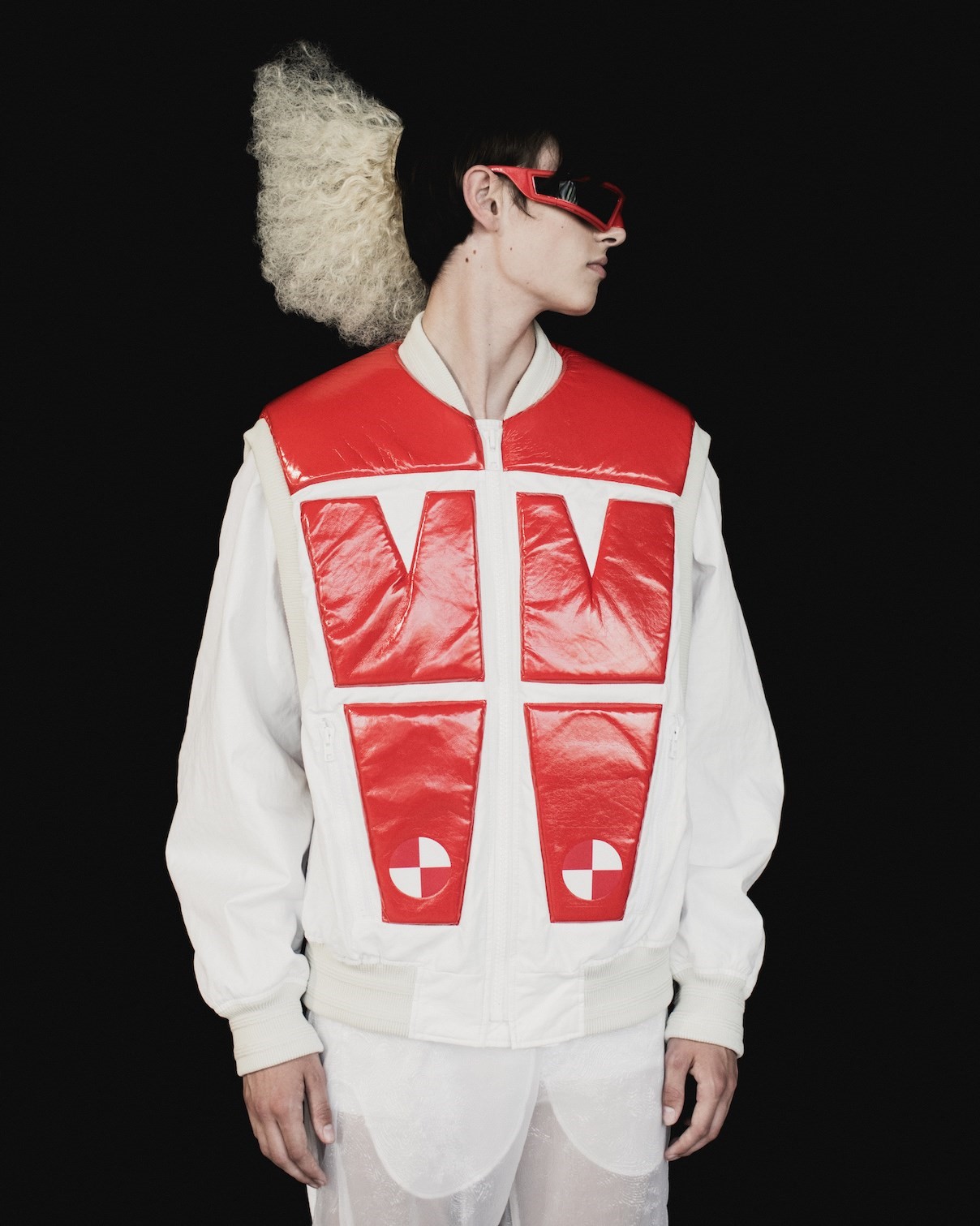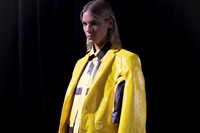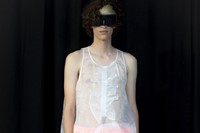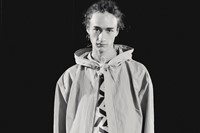It’s said that the role of the court jester is to speak the truth that other people fear to utter, which is something that Walter Van Beirendonck knows a thing or two about. At first glance, he’s the stern-faced Hell’s Angel making playful clothes (or in his own modest words: “the funny designer of the brightly coloured garments”), while his generation-spanning rainbow cult of devotees understand that the complexities of Van Beirendonck’s designs thread deeper than their surface level oddity. Video calling from his home in Antwerp, Van Beirendonck is a week away from the unveiling of his Spring/Summer 2024 collection, and occasionally picks up an A4 workbook (he makes one for every collection) to show me his collages, sketches and hand-drawn “hieroglyphs”. The season is titled Dawleetoo, and like many of his collections before this, it began with the fear of a changing world. “I’ve been a little bit overwhelmed, and a little bit disturbed by everything that’s been happening with artificial intelligence,” he says.
Leafing through the workbook’s pages, he holds up a spread to the webcam, peeking out from behind it with a warm “can you see that?” before divulging in his soft Flemish accent what makes the visuals so rich as to inspire clothing. He’s showing images of Dawleetoo, a golden city in the middle of the Sumatra rainforest, said to be a destination travelled to in the late 1800s by British explorer Alfred Isaac Middleton, where, upon arrival, he buried his excavated treasures of the city in a casket and then mysteriously disappeared – or would have done, had the city ever existed. “It was all a hoax,” Van Beirendonck says with a smile, “but it’s a charming story.” What does exist are sepia-toned, albeit fake images depicting something of another planet; tribes of bug-like beings and the sun-drenched ruins of a lost civilisation, which continue to circulate through Reddit communities and online conspiracy forums, and now mosaic Van Beirendonck’s workbook. “We really are fighting with reality today,“ he says. “It’s becoming more and more difficult to understand what is real and what is not real.”
“I don’t feel I should limit or censor myself. [This is] how I see the world and how I am reflecting it” – Walter Van Beirendonck
The collection’s second inspiration is very much grounded in reality. “I think that today we are crash test dummies for all of the misery and aggression happening all over the world. We have natural problems, we have war, we have so many economic problems, and we also have diseases. You’re constantly under attack, almost.” Looks come padded, protected, with bold curved shoulders that sit like a sized-up rugby ball below the neck. While still brazen in colour, Van Beirendonck applies only the colours of safety – yellows, blacks, reds and whites – sometimes printed with a bevy of abstract hieroglyphics, an alien language seemingly lifted straight from the etched walls of a lost civilisation. Sex, it seems, is ever a concern, with sheer fabrics soft against the harsher high-shine vinyls and padding, revealing bare skin beneath. “[Sexuality] is part of life. It’s one of the ingredients from the beginning, and makes me work as a person.” The collection would be remiss without Van Beirendonck’s signature touches of whimsy, with daintily ruffled blouses and Mickey Mouse-eared baseball caps. Is this a more restrained offering? Perhaps, but it is far from purely commercial.
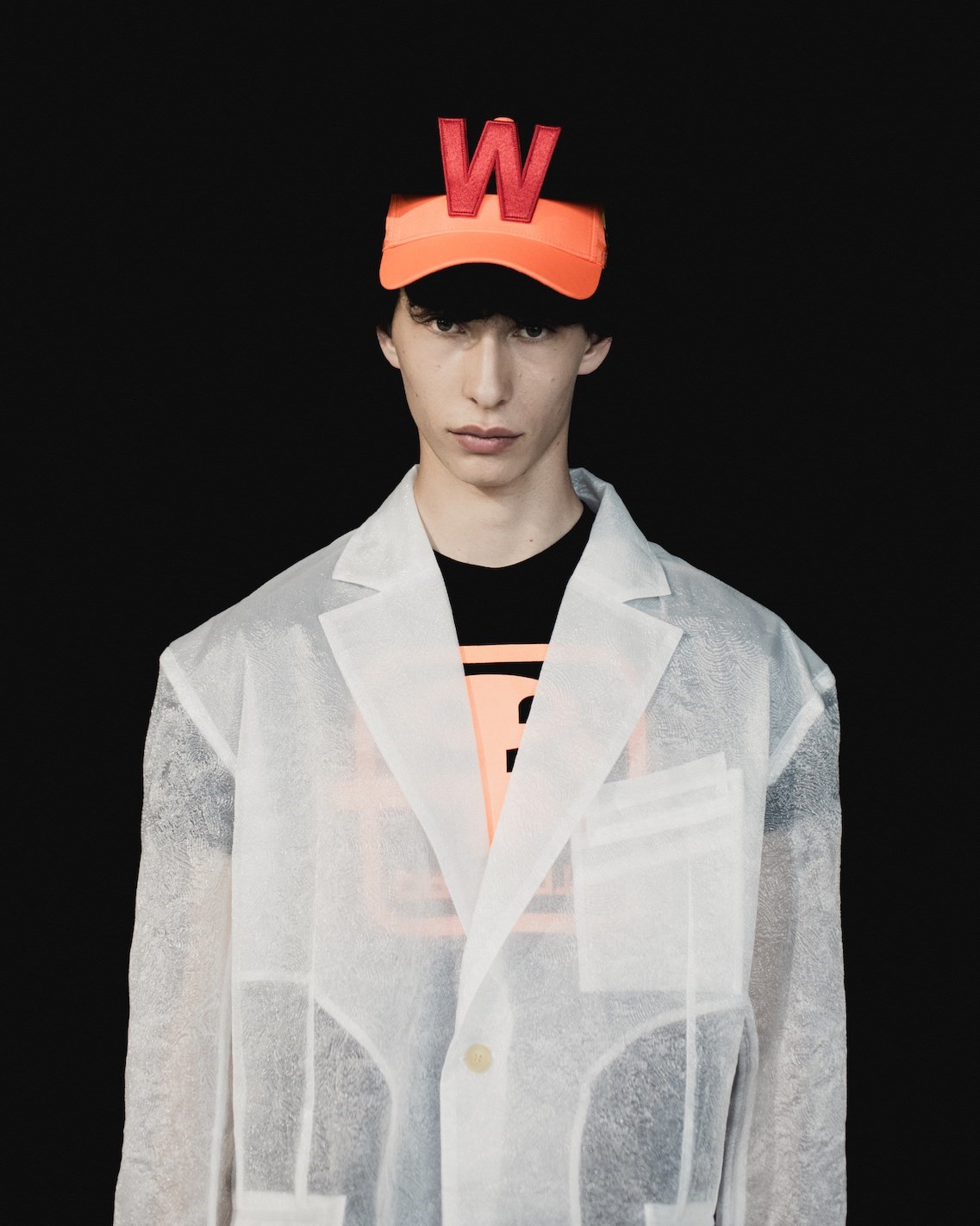
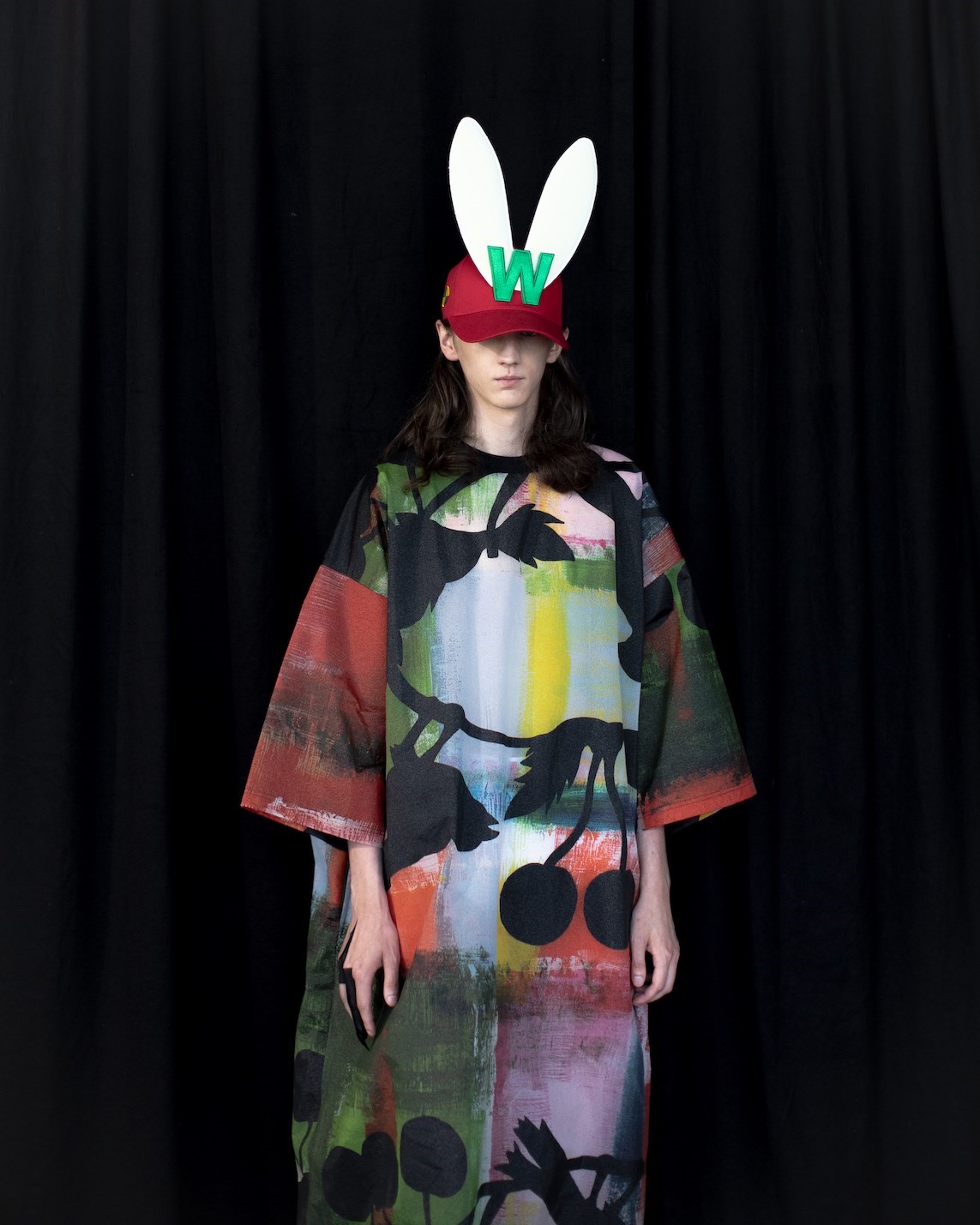
Amid a fashion industry and a world in constant flux, Van Beirendonck has been a stable force since his emergence as part of the Antwerp Six in the 80s, when he helped shape the Belgian city into an unlikely fashion mecca. Burned by the fires of fashion’s monopoly, he watched as billion dollar brand conglomerates spread a threatening syndicate that swallowed and spat out colleagues and friends; yet Walter Van Beirendonck has remained, quite miraculously, an independent fashion brand since 2004. “I knew McQueen, I knew Galliano. When you see how they went through such traumatic things, it’s really sad ... then you’re not wanting to be part of that world,” he says. Decades of cultivating his own label means he has struck a fine balance that allows “just enough” growth as a business, but with the liberty of independence. “I would feel very frustrated that I had to start from the selling results from my previous season, then have to make a second version of the bestselling piece. I mean, I’ve been there, and in 2000 I swore I would never go there again.” Van Beirendonck is referring to his W< (Wild & Lethal Trash, or just Walt) line owned by German jeans manufacturer Mustang which he designed from 1993 to 1999. “[Mustang] gave me wings, because I could do the most incredible shows and collections and castings, but at the time, fashion was changing. I really felt misused.”
From his bird’s-eye view, Van Beirendonck sees an industry of labyrinthine intricacy with immaculate clarity – an industry at present he seems less than impressed by. “It’s overwhelming, and even … what’s the word?” He ponders over the dozens of cruise collections touring the world, and the toxic trails of carbon emissions left in their wake. Kiss the Future!, absolutely – but what if there’s no future to be had? “It’s just to get attention, and it’s really disgusting. That’s the word – it’s disgusting,” he says. Van Beirendonck speaks true to his morals as one of the last remaining fashion punks; where today the runway as a platform for politics is part and parcel – be it gender and sexual freedom, war and terrorism – his own radical, transgressive values have nurtured the roots of his label since day one. “Choosing the Walter logo as a nude of myself; it’s a statement that I present only myself, 100 per cent. I really go to the flesh.” The clothing’s statements make them challenging not only to a status quo, but in their kaleidoscopic too-muchness. In the 90s he left the fashion fraternity quite tongue-tied, his designs a million miles away from the sober arrival of grunge and minimalism. But Van Beirendonck, guns blazing, never flinched – even if the press, flustered and faintly disapproving of his latex gimp suits and phallic fashions, did. “I don’t feel I should limit or censor myself. [This is] how I see the world and how I am reflecting it.”
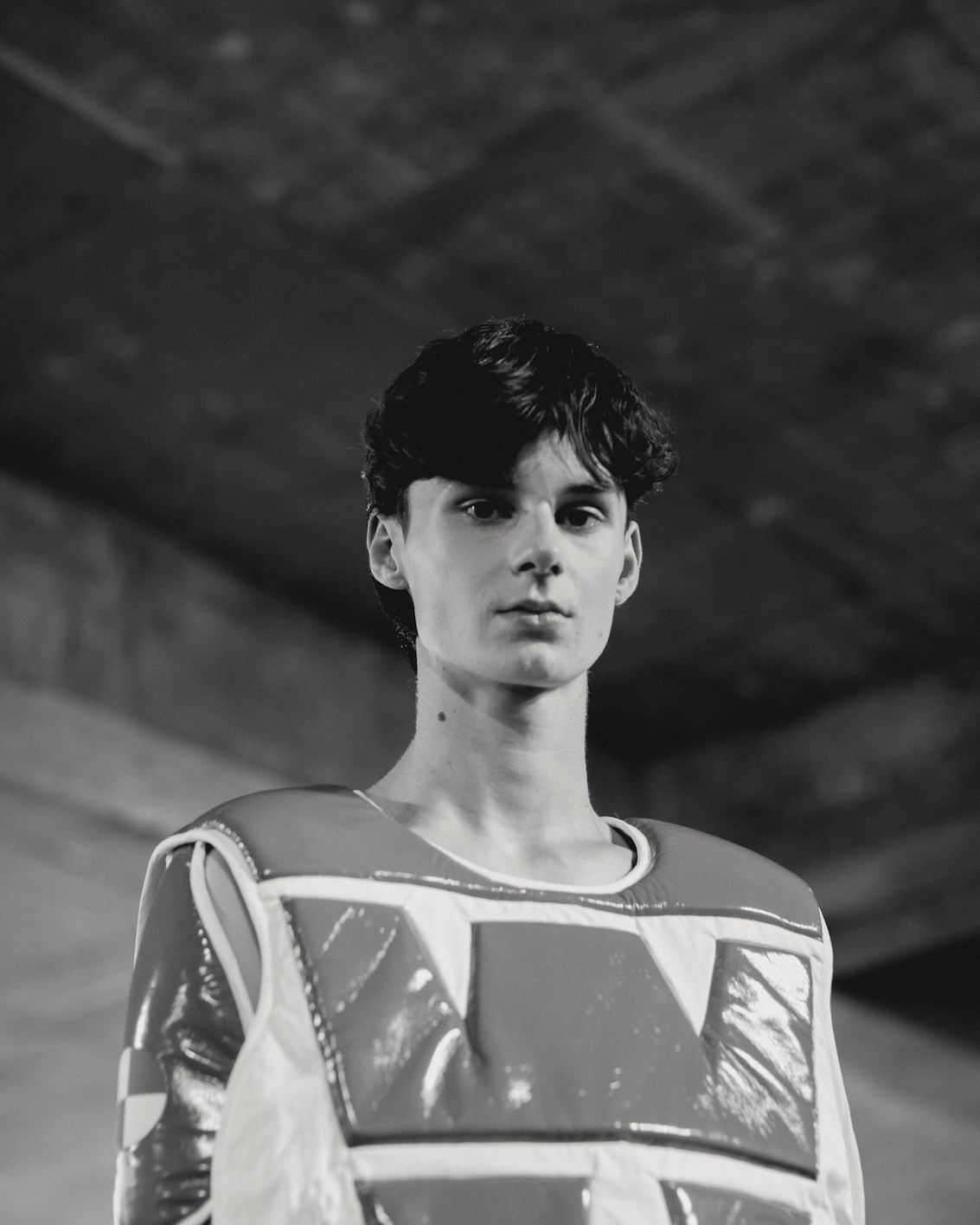
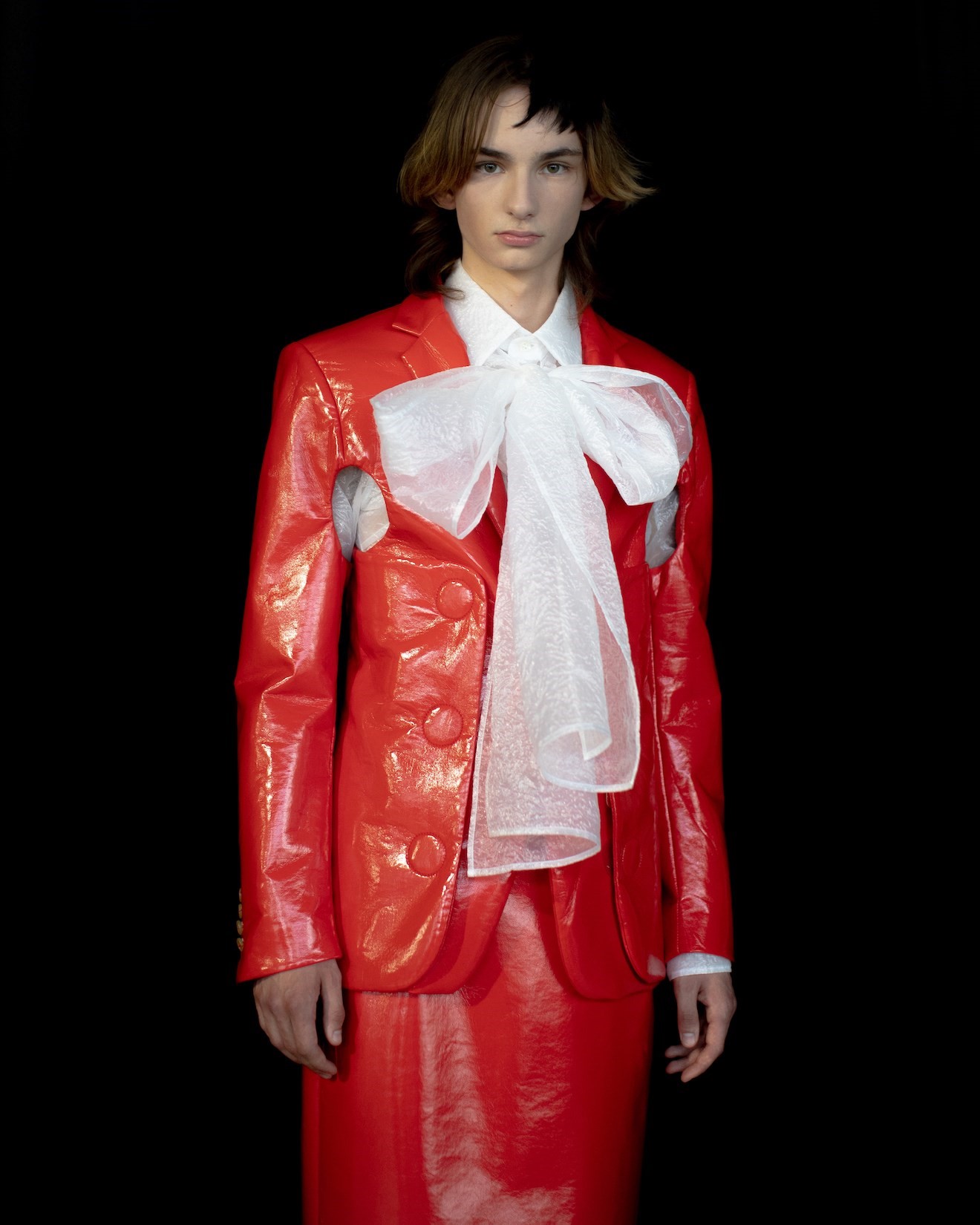
It’s almost exactly a year since Walter left his position as the head of fashion at the Royal Academy of Fine Arts Antwerp. He began working there in 1985, a mere five years after he graduated from the same academy. “I stepped down because I had to step down. It was rather upsetting, but I knew it was coming. It happened and I have to deal with it.” Belgian law states that teachers must retire at 65, marking the end of his 37 years mentoring and inspiring the future generations of the fashion industry, but the message of his label echoes as loud as his tuition. “I’m a little bit like an outsider in fashion, and I’ve not got a lot of impact. But on the other end, what I do is really telling: you can do what you want even with a small budget. You can do what you want if you go for it. You can do what you want if you really stand up and show it the way that you want it.” Fostering a community of hairy kinksters, boisterous queers, ravers and radicals, Van Beirendonck is unblinking in his commitment to his gleefully monstrous, technicolour universe. “Even if I’m doing extreme things, it’s important that it has a certain balance,“ he says. “It’s always about beauty.”
